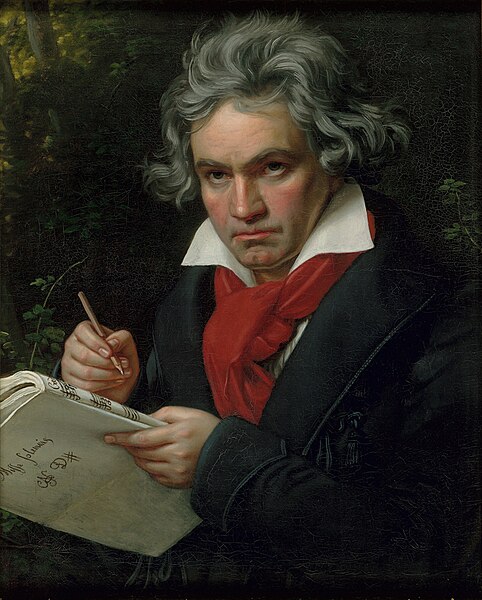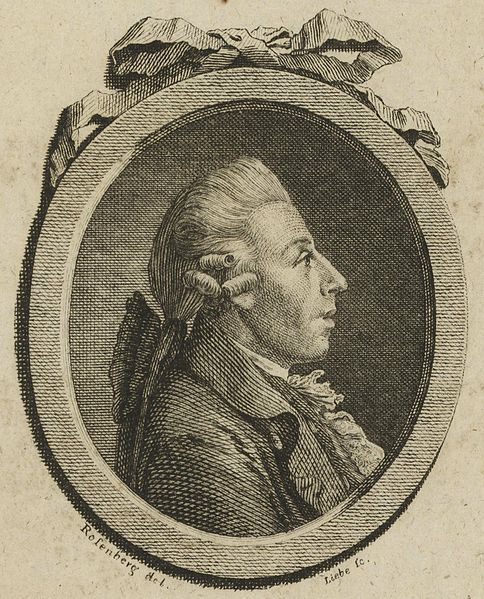Piano Sonata No. 29 (Beethoven)
Ludwig van Beethoven's Piano Sonata No. 29 in B♭ major, Op. 106 is a piano sonata that is widely viewed as one of the most important works of the composer's third period and among the greatest piano sonatas of all time. Completed in 1818, it is often considered to be Beethoven's most technically challenging piano composition and one of the most demanding solo works in the classical piano repertoire.
The first documented public performance was in 1836 by Franz Liszt in the Salle Erard in Paris to an enthusiastic review by Hector Berlioz.
Beethoven in 1818–19; portrait by Ferdinand Schimon [de] (1797–1852); source: the Library of Congress
Sketches for the slow movement of Piano Sonata No. 29, probably of 1818, musical autograph
Ludwig van Beethoven was a German composer and pianist. He is one of the most revered figures in the history of Western music; his works rank among the most performed of the classical music repertoire and span the transition from the Classical period to the Romantic era in classical music. His early period, during which he forged his craft, is typically considered to have lasted until 1802. From 1802 to around 1812, his middle period showed an individual development from the styles of Joseph Haydn and Wolfgang Amadeus Mozart, and is sometimes characterized as heroic. During this time, Beethoven began to grow increasingly deaf. In his late period, from 1812 to 1827, he extended his innovations in musical form and expression.
Beethoven (1820)
Beethoven's birthplace at Bonngasse 20 in Bonn is now the Beethoven-Haus museum.
Christian Gottlob Neefe, one of Beethoven's first music teachers, depicted in a c. 1798 engraving
Count Waldstein, depicted in a c. 1800 portrait by Antonín Machek

![Beethoven in 1818–19; portrait by Ferdinand Schimon [de] (1797–1852); source: the Library of Congress](https://upload.wikimedia.org/wikipedia/commons/thumb/5/51/Ludwig_Van_Beethoven_LCCN2003663903.jpg/468px-Ludwig_Van_Beethoven_LCCN2003663903.jpg)




